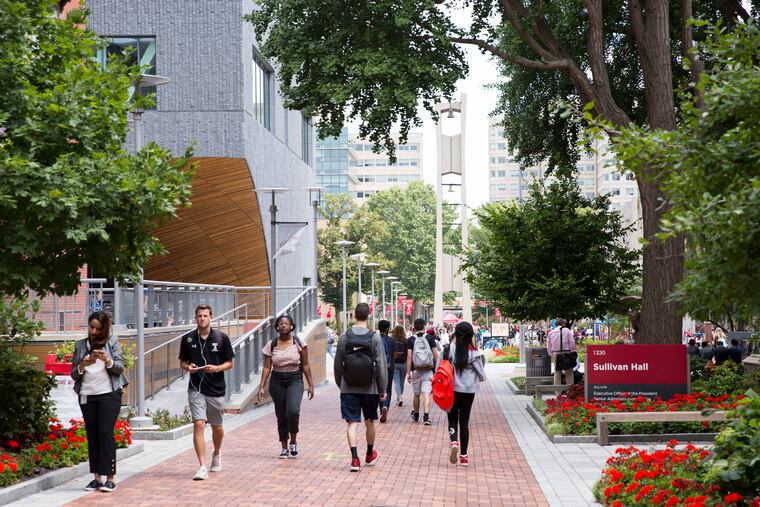At Temple University, enrollment drop was an unintended but welcome consequence
Temple’s has about 450 fewer students this year. University officials say its Fly in Four program, which supports on-time graduation, has helped the graduation rate, resulting in fewer students on campus.

Temple University’s Fly in Four program, started in 2014, provides students with academic counseling, guaranteed course offerings, and in some cases financial aid to help them graduate in four years.
There’s one more thing the program has achieved on the North Philadelphia university’s campus: Fewer students.
And as far as college officials are concerned, that’s a good thing.
Temple’s enrollment dipped by about 450 students this year, and officials said the reason is largely that more students are graduating on time as a result of Fly in Four, which was started by former president Neil D. Theobald.
The university’s four-year graduation rate has risen from 44% in 2014 to 55% in 2018, the first graduating class to be offered the full benefits of Fly in Four, said Shawn Abbott, vice provost for admissions, financial aid, and enrollment management.
“When people are graduating on time, it has the unintended consequence of making the university a little bit smaller,” Abbott said.
» READ MORE: As colleges compete for fewer students, the pressure rises to meet enrollment targets
The graduation rate rose to 56% in 2019, which meant that 835 more students graduated than in 2014, the university said.
Temple last year enrolled more than 40,000 students; this year, it will have just under 40,000. The number of incoming freshmen and transfer students reached 7,185, with freshmen accounting for 4,975.
The quality of the incoming class has remained about the same as last year, with an average GPA of about 3.5 and an average SAT of 1245 to 1250, Abbott said.
Temple cut about $23 million from its budget to respond to the enrollment drop, Ken Kaiser, chief financial officer and treasurer, said in July after a board of trustees meeting. The university eliminated some vacant positions and laid off about 15 employees, he said.
Under Fly in Four, Temple offers up to 500 incoming students from lower- and middle-income families $4,000 a year to help cover the cost of tuition if they agree to limit their time spent on off-campus jobs. Temple also guarantees to provide all courses the students need to graduate in four years and if it is not able to do so, it will pay for the additional courses. The university also stepped up academic advising and course scheduling.
Abbott said he couldn’t say for sure that all of the increase in the graduation rate or resulting smaller enrollment is due solely to Fly in Four.
“But it’s really unusual for a university to move its graduation rate in such a dramatic way over such a short period of time,” he said. “That’s really the only major initiative we can point to as one of, if not the largest, contributor to why we’re smaller.”